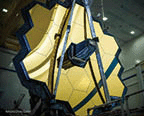Return to 1st Quarter 2022 articles.

from Does God Exist? 1st Quarter 2022
STAY UP-TO-DATE ON NEWS AND NOTES. The stories in News and Notes are condensed from articles previously published on our website DOES GOD EXIST? TODAY. You can use the links within each of these articles to see the original posts (on the Does God Exist? Today website) for more details. (Some of the articles below have links to outside sources, which may not be available after we have published this page.) There are also many other interesting and informative articles on the Does God Exist? Today website each day. We encourage you to follow us daily on “Does God Exist? Today.” On that website you can also subscribe to our free weekly e-mail update. We call it “The Best of the Week from DOES GOD EXIST?” It contains links to the most popular of our posts on DOES GOD EXIST? TODAY and our facebook page (Facebook.com/evidence4god).

OPPORTUNITY TO STUDY WITH JOHN CLAYTON: Because of the COVID pandemic, we have suspended our lectureship schedule. In place of that, we are providing an opportunity for congregations to have a lectureship electronically. We want to give the readers of this publication the same opportunity to study with John Clayton.
We will mail you a DVD of the first four lectures in our video series. You or your group can watch the four programs writing down questions and challenges to the material. Please send us your questions via e-mail or postal mail, and John Clayton will respond to them. If you are satisfied with that material, return the DVD, and we mail you the next one. Your only cost is the return postage for the DVD.
If you are interested in this opportunity, please send us your name and address, and we will send you the first DVD. Watching the Does God Exist? presentations in the comfort of your home is an excellent way to receive the information without risk from COVID or the inconvenience of driving to a lectureship site. E-mail your request to John Clayton at jncdge@aol.com.
LIFE UNDER THE ANTARCTIC ICE SHELF: German polar researchers drilled through the Antarctic ice shelf. After boring through 656 feet (200 m) of ice, they scooped up material from the seafloor another 328 feet (100 m) down.
A British marine biologist studying the sediment identified 77 different species of animal life, including tube-feeding worms and bryozoans, which are stationary filter feeders. This study was surprising because filter-feeders feed on algae which require sunlight to grow. However, there is no sunlight to provide photosynthetic life under the Antarctic ice shelf. The explanation is that these creatures are feasting on microorganisms that the ocean currents sweep under the ice shelf. You could say the food is delivered to their doorstep.
Life survives here in one of Earth's least-known habitats despite the cold and dark conditions. Like the scientists who discovered and studied these life forms, we are amazed. But, more than that, we thank God for wisely creating life able to adapt and survive even in hostile environments.
Source: https://www.livescience.com/antarctic-ice-shelf-lifeforms-found
ANIMAL TOOL USE: Years ago, people thought that only humans used tools, but recent studies have shown animals use tools if you define a tool as an instrument used to accomplish a given task.

Science News reported that polar bears sometimes kill walrus by bashing them with chunks of stone or ice. People have observed birds cracking nuts by dropping them from high altitudes onto rocks. Elephants use tree trunks for a variety of purposes, and crows use sticks to pry off the lids of bottles. Chimpanzees use conchoidally fractured chert or flint to cut open a fruit.
There is a difference between a tool and a machine. A machine is an assembly of interconnected components arranged to transmit or modify force to perform useful work. A broader question here is whether intelligence is needed to fashion a machine? If that is the case, intelligent animals should be making machines, and mentally challenged humans would not be able to do so.
The design of all animals includes the equipment to secure food and shelter. Building into animals the ability to use objects in their environment to survive is another example of God's design in the natural world. However, what sets humans apart is not tools, machines, or intelligence. Instead, our spiritual nature is what makes humans different.
Source: https://www.sciencenews.org/article/polar-bears-bludgeon-walrus-stones-tools-ice-inuit
A GIANT MILLIPEDE: Researchers from the University of Cambridge have found the fossil of a giant millipede in England. This specimen is 8.6 feet long and would have weighed about 110 pounds. Named Arthropleura, this is the largest invertebrate ever found, replacing giant sea scorpions that previously held the record. This animal lived before the dinosaurs and was an omnivore eating plants, nuts, seeds, and other invertebrates.
The importance of a find like this is that it confirms that large animals, insects, and plants existed in the past. In addition, it reminds us that the ecology of the early Earth, as it was being prepared for later life forms, was very different from what we see today.
Genesis 1:1 simply tells us that God created the Earth, not how or when or what processes he used to prepare the planet for humans. But because God used a process, we can locate resources far underground. If he had simply “zapped” the planet into existence, we would have no clue about where to look for oil or coal or various minerals.
Source: https://www.usatoday.com/story/news/world/2021/12/21/giant-millipede-fossil-big-as-car/8984712002/
A LARGER DINOSAUR: We are amazed by the enormous size of animals in the distant past. From a giant millipede to the Titanoboa and the Titanosaur, the size of ancient animals excites fossil hunters. Since 2017, Patagotitan has held the record for the largest dinosaur at 120 feet (36.5 m) long and weighing over 57 tons. However, paleontologists in Argentina recently found pieces of a larger dinosaur.
Unlike mammals, reptiles never stop growing, so there is virtually no limit to their size. A more significant issue is having environments warm enough for such animals to survive and enough plant material to sustain them, plus a high oxygen level.
The environment that allowed a larger dinosaur to survive would not have been hospitable to mammals. Reptiles cannot only survive very hot conditions, but they require heat to sustain their bulk. A hot Earth with very wet conditions would also promote rapid plant growth. Accordingly, the plant fossils from the time of those animals indicate huge size and rapid growth.
God was not a magician miraculously zapping things into existence. God could do the creation any way he wished, but he wisely chose to make the resources humans would need in such a way that we could find them. He acted as an engineer, producing the coal, gas, oil, iron, salt, and other resources we would need by processes we can study and understand. Present-day processes on Earth could never produce them, but the enormous animals and plants of the past created enough resources to take us into the nuclear/solar age.
Source: https://www.discovermagazine.com/the-sciences/have-scientists-found-the-biggest-dinosaur
THE JAMES WEBB TELESCOPE: On Christmas Day, 2021, the European Space Agency launched a new space telescope designed by NASA. The James Webb Space Telescope (JWST or Webb) is a successor to the Hubble Space Telescope (HST or Hubble). However, it is intended to be a space observatory with capabilities far beyond HST, which was launched in 1990.

Scientists expect the JWST to revolutionize astronomy and expand our knowledge of the universe. It will observe the universe in infrared light, while HST is limited to visible light. Because galaxies farther away are retreating at increasing speeds, their light shifts toward the red or infrared spectrum.
Earth-based telescopes must always observe the universe through particles, pollution, and moisture in our atmosphere. That limits their ability to obtain sharp, precise images. Space-based telescopes eliminate that problem. Webb will give much sharper images with its mirror made of beryllium coated with gold and a diameter more than 2.5 times as wide as Hubble's.
Another thing that astronomers hope to study with JWST is dark matter, the stuff that is out there but cannot be seen or detected by any means science has discovered. The way they know dark matter exists is that it holds the galaxies together. Physics cannot explain why spinning, spiral galaxies, such as the Milky Way, do not fly apart because of centrifugal force.
We are excited to see the new images of the universe the James Webb Space Telescope will capture. As we learn about the formation of stars and galaxies, it opens the door to knowledge of God's handiwork, allowing us to say, “So that's how God did it!”
Source: https://jwst.nasa.gov/content/about/faqs/faq.html#webb
EXOPLANETS AND LIFE IN THE UNIVERSE: Movies and television shows featuring space travel and alien life have fascinated people for decades. Other galaxies are many light-years away, and the laws of physics will not allow us to travel even one percent of light speed. Nevertheless, people are still concerned about exoplanets and life in the universe. An exoplanet is any planet outside of our solar system, and scientists are trying to find one that could support life.

Scientists look for planets orbiting stars that are so far away we cannot even see the stars with our unaided eyes. Unlike in the movies, they are so far away that we could never go there. Even sending a radio signal to those possible planets would take thousands or even millions of years, traveling at the speed of light. Getting a message back would take an equal amount of time.
There are so many requirements for life that the chances of any of those planets supporting advanced life would be almost infinitely small. God could have created life elsewhere in the universe, but we have no evidence one way or the other. The Bible does not tell us, and science can only look and hope for a clue. Whether or not life exists on other planets or moons, we believe the fine-tuning of Earth for life is evidence for God's existence.

ELEPHANT TRUNKS AND ROBOTS: New research shows that using elephant trunks as a model for robots, engineer-designers may soon create machines capable of doing things that no current robot can do. For example, the elephant trunk has 40,000 muscles that work together to allow the animal to pick up a single leaf or lift and move a large log easily.
Researchers used motion capture technology similar to that used to create movies where the movement of animated characters is mapped to the motions of real actors in a studio. Studying elephant trunk movements by this method allowed the researchers to carefully examine the myriad ways an elephant uses its trunk.
Looking at the elephant's trunk design, it does not seem possible that this could be a product of chance. Yet, the elephant's survival is only possible because of this highly complex appendage.
Source: Scientific American, December 2021 (page 18)
THE “EGG-QUATION”: When you look at the eggs of different birds, you will notice that they have different shapes. Why is an egg's shape important? There is a need to know how to pack eggs to support them to prevent cracking. This is not just important for people who raise chickens and sell eggs at your local grocery store but also for conservationists protecting birds in the wild.

Scientists at Kent University in England came up with a mathematical formula with four essential inputs: (1) egg length, (2) maximum breadth, (3) diameter where the pointed end terminates, and (4) location of the egg's maximum diameter in relation to the midpoint of its length. The formula works for any egg shape.
This is a classic example of two things. One is that research that may seem pointless to a casual observer frequently provides needed information. People will use this equation to transport eggs safely, incubate eggs efficiently, and restore bird populations in areas where they have become extinct.
A second thing this research shows is the incredible design of eggs. An engineering equation allows the design of precise egg shape construction to fit all environments. This complex engineering problem shows that even the ordinary egg speaks of the Creator's wisdom and skill in providing for his creatures.
Source: Science News, 12/4/21, page 11
STUDY CHALLENGES NEO-DARWINISM: A long-term study of 27,224 mice over 26 years challenges a basic assumption of neo-Darwinism. The assumption is that natural selection guides evolution by removing “unfit” individuals. Therefore individuals that are more fit survive to pass on their genes.
Researchers identified mice with broken, missing, or deformed limbs, missing eyes, cataracts, and missing or mutilated tails. Evolution predicts that these unfit mice would be removed from a population, and the researchers set out to see how quickly that would happen. The data shows that the survival rate of the impaired mice was no different from that of mice who had no physical impairments.
This observation would be even more dramatic for humans because disabled humans live long lives supported by family members or group associates. That kind of support has never been observed in mice. The evidence is that physical impairments in the animal kingdom do not necessarily cause the demise of an individual. This challenges a basic assumption of neo-Darwinism which, like uniformitarianism, is not supported by the evidence.
Source: https://www.nsf.gov/discoveries/disc_summ.jsp?WT.mc_id=USNSF_1&cntn_id=303
..........986&utm_medium=email&utm_source=govdelivery
HEZEKIAH'S WALL: The Israel Antiquities Authority announced a “groundbreaking discovery.” Archaeologists have uncovered the wall Hezekiah built around 701 B.C. Isaiah 22:9 – 10 describes the wall's construction, and 2 Kings 25:10 tells of its destruction during the Babylonian siege of Jerusalem about a century later. In addition, the archaeologists found various objects, including seals, along the wall's base to confirm its date.
To help people learn more about biblical archaeology, we have produced a video series titled “Beyond Reasonable Doubt” with John Cooper. The series is an introductory presentation of positive evidence for the reliability of the Bible and is recommended for class use and individual viewing. See page 19 for more details.
Source: https://www.baslibrary.org/biblical-archaeology-review/47/4/9
Picture credit:
© Kletr. Image from big stock.com
https://commons.wikimedia.org/wiki/File:NASA%E2%80%99s_James_Webb_Space_Telescope_Completes_Comprehensive_Systems_Test_(50108343176).jpg
© Brita01. Image from big stock.com
© Stu Porter. Image from big stock.com
© Pippephoto. Image from big stock.com
